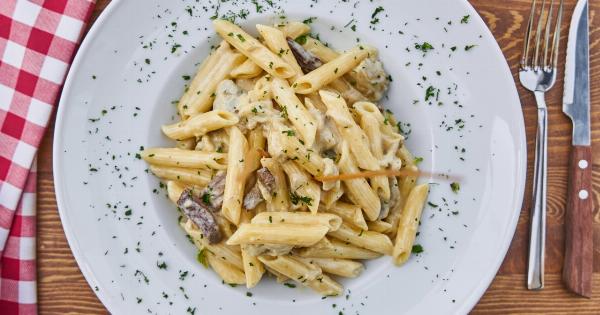Cystic Fibrosis (CF) is a chronic genetic disorder that affects the lungs and digestive system. It is caused by a mutation in the CFTR gene, which leads to the production of thick, sticky mucus that clogs the airways and obstructs the pancreas.
While there is no cure for CF, a well-balanced and nutrient-rich diet plays a vital role in managing the symptoms and improving the overall quality of life for individuals with CF. In this article, we will explore the essential components of a CF diet and discuss the impact of nutrition on the well-being of CF patients.
1. High-Calorie Foods
People with CF have a higher energy requirement due to the increased work of breathing and the impaired absorption of nutrients from the digestive system. To meet these energy needs, it is crucial to include high-calorie foods in their diet.
Healthy fats like avocados, nuts, and olive oil can be incorporated into meals to provide an additional source of calories. It is advisable to consult a registered dietitian to determine the optimal calorie intake for each individual.
2. Nutrient-Dense Foods
While meeting calorie requirements is important, ensuring that these calories come from nutrient-dense sources is equally essential.
CF patients may have difficulty absorbing certain vitamins and minerals, such as vitamin D, vitamin E, calcium, and zinc. Including foods rich in these nutrients can help prevent deficiencies. Examples of nutrient-dense foods include leafy greens, dairy products, fish, eggs, and fortified cereals.
Supplementation under the guidance of a healthcare professional may also be necessary.
3. Pancreatic Enzyme Replacement Therapy
Due to the obstruction in the pancreas caused by thick mucus, people with CF often have difficulty digesting and absorbing fats, proteins, and carbohydrates. Pancreatic enzyme replacement therapy (PERT) is a critical component of CF treatment.
PERT involves taking capsules or tablets that contain digestive enzymes to support the breakdown and absorption of nutrients. The doses of PERT are individualized based on the severity of pancreatic insufficiency and should be taken with every meal and snack.
4. High Protein Intake
Protein is essential for growth, repair, and maintenance of body tissues. CF patients often require a higher protein intake to compensate for increased energy expenditure and the impaired absorption of protein from the digestive system.
Lean meats, poultry, fish, dairy products, legumes, and tofu are excellent sources of protein. Moreover, a diet rich in protein can boost the immune system, promote wound healing, and support optimal lung function.
5. Adequate Salt Intake
Individuals with CF lose more salt through their sweat than those without the condition, leading to electrolyte imbalances.
It is crucial for CF patients to maintain an adequate salt intake by adding salt to foods or consuming salty snacks, as advised by their healthcare team. Adequate salt intake ensures proper hydration, electrolyte balance, and helps prevent complications such as dehydration and heatstroke during hot weather or intense physical activity.
6. Vitamin and Mineral Supplementation
CF can significantly impact the absorption of certain vitamins and minerals from the digestive system, even with a well-balanced diet. Regular monitoring of vitamin levels, such as vitamin A, vitamin D, and vitamin E, is necessary.
If deficiencies are detected, supplementation may be prescribed by a healthcare professional. CF-specific multivitamins are also available, addressing the specific needs of individuals with CF.
7. Hydration
Maintaining adequate hydration is crucial for individuals with CF, especially since they have increased water loss due to sweating and mucus production.
Drinking plenty of fluids, such as water, juices, and herbal teas, helps thin the mucus and facilitates its clearance. Avoiding excessive caffeine or sugary drinks is advisable, as they can dehydrate the body. It is essential to stay hydrated throughout the day, not just during meals.
8. Balanced Fat Intake
While individuals with CF often require additional calories from fat, it is crucial to maintain a balanced intake of healthy fats. Saturated and trans fats should be limited, as they can contribute to inflammation and heart disease.
Instead, focus on consuming monounsaturated and polyunsaturated fats found in sources like avocados, olive oil, nuts, and seeds. These fats provide energy, support vitamin absorption, and help reduce inflammation.
9. Regular Monitoring and Individualized Nutrition Plans
Each CF patient is unique, and their nutritional requirements may vary depending on factors such as age, disease progression, and overall health.
Regular monitoring of weight, growth, lung function, and nutritional status is essential to adjust the diet accordingly. Working closely with a registered dietitian who specializes in CF care will help develop an individualized nutrition plan and ensure optimal nutrition for the best possible outcomes.
10. Psychological and Emotional Support
Living with CF can be physically and emotionally challenging. The impact of the disease, along with the daily regimen of treatments and dietary restrictions, can affect the mental well-being of CF patients.
Providing psychological and emotional support is crucial for coping with the challenges associated with CF. Counseling, support groups, and being part of a community that understands and empathizes with the difficulties faced can significantly improve the overall quality of life for CF individuals.




























